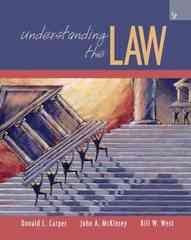Answered step by step
Verified Expert Solution
Question
1 Approved Answer
Labor Income Taxes Consider an RBC economy similar to the one described in Lecture 16 with two periods, no uncertainty, and fixed capital. The one
Labor Income Taxes Consider an RBC economy similar to the one described in Lecture 16 with two periods, no uncertainty, and fixed capital. The one difference is the introduction of a labor income tax. Households Households have a utility function in each period given by U(Ct,Lt), where Ct is consump- tion in period t and Lt is leisure in period t. In each period, there is a total time budget of T units, so the implied labor is given by Nt = T Lt. Households may save the amount S1 in period 1 with a given interest rate r, starting from an initial wealth level Y0. Labor in period t earns wages at rate Wt, but the labor income is taxed at marginal rate Nt 0 in period t, so that the households only receive the effective wage (1 Nt)Wt for each unit of labor supplied. The government rebates the taxes back to the households in lump-sum form with transfers Qt = NtWtNt in each period. The utility maximization problem is given by Firms max U(C1,L1)+U(C2,L2) S1 ,L1 ,L2 C1 =Y0 +(1N1)W1(T L1)S1 +Q1 C2 = (1+r)S1 +(1N2)W2(T L2)+Q2 Firms have a production function given by Yt = AtKN1 for t = 1,2. K is the fixed capital t stock in this economy, and there is no investment. Firms face the wage rate Wt and solve the static profit maximization problem maxAtKN1 WtN. N The resulting optimal choice of labor for firms, Nt, represents labor demand in period t. General Equilibrium General equilibrium in this economy is a set of prices and quantities Wt, r, Ct, Yt, Lt, and Nt such that Households optimize their utility as laid out above given Wt and r Firms maximize profits as laid out above given Wt 1 Markets Clear Labor Markets Clear : Nt = T Lt Savings Market Clears: S1 = 0 Resource Constraints Hold: Yt = Ct (a) Derivethehouseholdintratemporaloptimalityconditionsfortheoptimalleisurechoices Lt in periods t = 1, 2. These are also known as the labor supply curves in each pe- riod. These optimality conditions are simply the first-order conditions of the household objective with respect to L1 and L2 after substitution of the budget constraints: U[Y0 +(1N1)W1(T L1)S1 +Q1,L1]+U[(1+r)S1 +(1N2)W2(T L2)+Q2,L2]. (b) Using 1) the resource constraint, 2) the production function, and 3) labor market clear- ing, write the household labor supply curve as an equation with Wt on the left hand side and some function of At, Nt, and K on the right hand side. You should expect an equation similar to one appearing on p5 in Lecture 16. However, on the right hand side of the equation, Nt will now also appear. (c) Derive the firm's intratemporal optimality conditions for labor Nt in each period t = 1, 2. These are also known as the labor demand curves. (d) Forperiodt,setthehouseholdlaborsupplycurveequaltothefirmlabordemandcurve and eliminate Wt from this equation to derive a unified labor market equilibrium condi- tion. Again, you should expect an equation similar to one appearing on p5 in Lecture 16, but Nt will appear. (e) Assume that household preferences are given by U (C, L) = log (C v(T L)) where v(N) = N1+ with > 0. Using this particular functional form for preferences, 1+ simplify the unified labor market equilibrium condition from part (d). (f) With the firm labor demand expression on the left hand side, and the household labor supply expression on the right hand side, plot the labor market equilibrium condition as a function of Nt, i.e. generate a graphical depiction of labor market equilibrium analo- gous to Figure 2 in Lecture 16. (g) If Nt increases, how does the labor market equilibrium diagram change? (h) If Nt increases, does Nt increase or decrease? Justify your answer. (i) If Nt increases, does Yt increase or decrease? Justify your answer. (j) If Nt increases, does Ct increase or decrease? Justify your answer. (k) If Nt increases, does Wt increase or decrease? Justify your
Step by Step Solution
There are 3 Steps involved in it
Step: 1

Get Instant Access to Expert-Tailored Solutions
See step-by-step solutions with expert insights and AI powered tools for academic success
Step: 2

Step: 3

Ace Your Homework with AI
Get the answers you need in no time with our AI-driven, step-by-step assistance
Get Started


